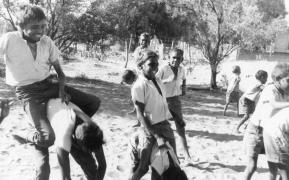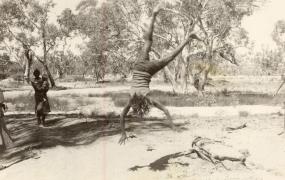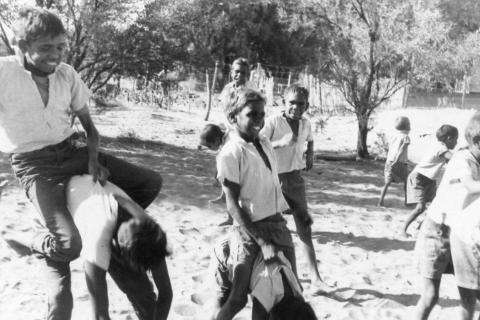Children learn the Western Arrarnta language from their families and continue to learn it throughout primary school. The language is still relevant to the daily life of people in Ntaria. As you can see in this youtube video “Uncle Jimmy says Thumbs up! Ntaria School 2013” the children are not only able to sing in their language but through resources such as a the Western Arrarnta Picture Dictionary 1 language is kept relevant and connected to everyday activities such as traditional food and play.
Children understand the names of local birds, animals and fish and learn about the nature of each critter. For example, the spangled grunter is called lhungurlpara and all the children know that lhungurlpara tjalka kngarra, ngkwaarna urrputja (the spangled grunter is a fish with lots of meat and only a few bones).
Through language, children also learn about kinship connections which often carry different meaning and obligations than are associated with the relevant English terms. For example, there are two different words for cousin: irltjarla and arnkarla.
Wintjana nukanhaka katja irltjarla nuka nama. My father’s sister’s children are my irltjala.
Kaamurna nukanhaka katjia arnkarla nuka nama. My mother’s brother’s children are my arnkarla.
- Western Arrarnta Picture Dictionary compiled by David Roennfeldt with members of the communities of Ntaria, Ipolera, Gilbert Springs, Kulpitarra, Undarna, Red Sand hill, old Station and other outsttaions, IAD Press 2006
Media







